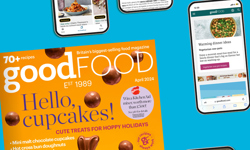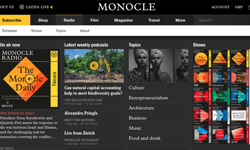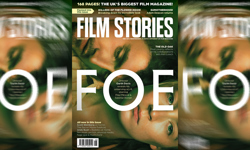Desperate Times call for Digital Doris
I wonder if they teach today’s students on magazine journalism courses about “the Doris”. It was one of the first things I ever learned in the trade and it’s proved to be one of the stickiest.
The Doris or the “hey Doris” or, if you prefer, “hey Doreen”, was the term applied to those nibs of human interest which combined fascination and pointlessness in exactly the right proportions to cause one notional lady at the check-out to get the attention of another notional lady at the check-out and then either read the item aloud to her or pass said item over the confectionery for closer inspection. This idea of the Doris took root in the unlikeliest corners of the magazine world. It didn’t matter how high-flown or sophisticated the magazine. Nothing was above being deliberately peppered with the kind of hooky bits that made people want to pass them on.
I suppose you could describe the Doris as an early example of the Attention Economy in action. The urge to share has always been at the core of the magazine experience, whether that meant recipes snipped out of Good Housekeeping, cartoons photocopied from the New Yorker or bizarre medical anecdotes from the National Enquirer.
Sharing is the petrol of Twitter and Facebook. It’s the modern disease. In the shared world, people ache to get there first in order to be seen as an originator rather than a laggard. In fact, some of us are so primed to improve our own social standing by being seen as a conduit of good stuff, we often enthusiastically pass things on without having read them first. Not for nothing is one of the hottest sites in modern media known as Buzzfeed.
So what? This what. The problem is that 21st century magazines, in their entirely sensible quest to keep their content behind the same walled garden as their advertising, have made that content impossible, or at least difficult, to pass on. And this at a time when everybody else is showing the market an enormous amount of leg. Nobody else is this reticent. It would only take me a couple of clicks to find myself sampling the latest record by Beyoncé, the newest major release from Hollywood studios or even an entire opening chapter of the latest blockbuster book.
Hard to share
If, on the other hand, I wanted to sample a particular edition of a magazine which somebody had drawn to my attention, I would either have to go out of the house, which is clearly out of the question, or jump through a number of digital hoops, some of which require registration or the downloading of a “shell” app, all of which are just enough to put me off and instead devote my time to something easier to find. This means that in the world of magazines, it’s next to impossible to taste and try before I buy except in the most dispassionate “here’s a sample issue” type way. The magazine app experience, which ought to make it easier to find new readers, instead does the opposite. A magazine app does not lend itself to instant linkage and recommendation. Either you can’t do it at all or it’s so infernally complicated that most people simply wouldn’t persevere. Your devoted core readers may put up with a bit of inconvenience themselves but they are never going to ask their unconvinced friends to do the same thing. There is a thin line between being the friend who recommends cool stuff and the bore who’s always burying you in links. Nobody wants to risk crossing it.
This is serious. How did you first find out about the magazine that eventually became your favourite? Probably by seeing it being read by an older sibling, the older kids at school or someone with claim to authority in the area with which it dealt. It doesn’t matter which one. The point is that you saw it long before you read it, read it very occasionally long before you bought a copy and bought the odd copy long before you took to buying it regularly. You only have to look the length of your railway carriage to know how unlikely that is to happen nowadays. Magazine reading was a habit you inherited. It took place in public. And it was something that took hold by stages. Back in the sixties, my own mother would start reading a new title only after reading a few months’ worth of back issues she’d acquired in some bulk swap deal with her sister-in-law. The chances of her splashing out on some new fangled thing just on the basis of a few flash cover lines in WH Smith were slim indeed. She needed to live with a title before she felt like committing herself. In this, she was far from alone.
Banging the magazine drum
It has to be the biggest challenge facing consumer magazine publishers today. Where are the next generation of readers going to come from? And, more specifically, where are they going to hear about what they might like and where are they going to sample it frequently enough to turn them into a regular reader? In a climate where there are very few major launches, nobody is out there in the marketplace banging the drum for the pleasures of the magazine experience. The PPA did what it could with its 100th anniversary activities but it will take more than that to move the dial of public perception. It’s not helped by the fact that the retail environment in which magazines are sold gets more down at heel with each passing year. I was recently looking at a magazine stand in a German airport and wondering how long it had been since I saw magazines in the UK displayed in such a pristine and tempting environment. Is it beyond the bounds of possibility that somebody might reinvent the magazine retailing experience? God knows we need it now. Let’s say it’s too much to expect WH Smith to make that happen. And that Apple’s Newsstand isn’t going to step into the breach and do anything dramatic.
This is where we are. This begins and ends with the customer. Let’s assume that the scarcest, most valuable commodity in the struggle to win over your new reader does not lie in the raw materials involved in making the product, physical or otherwise; it does not reside in the talents and abilities of the people involved in fashioning the edition; it’s not in your thrice burnished brand; it’s not your lovely advertisers; in fact, it’s not anything you do at all. No, the thing that is hardest to secure is the attention of that reader. If you can get them to think about you for one uninterrupted minute, then you are in a very powerful position. If, during that minute, you haven’t managed to put a digital copy of your magazine in their hand then not only have you thrown away that powerful position, but you have also taken a revolver and shot yourself in first one foot and then the other.
I know all the reasons why you might not wish to give even one edition of your product away for free. What’s needed is some Great Escape from this corner into which we have steadily painted ourselves to re-engage with the wider public. An event. A thing. An initiative. Something like the Oscars, that would be nice. The value of the Oscars to the film industry is that they come along once a year and remind people that they like going to the cinema. Or, if that’s too big, which it obviously is, what about National Record Store Day? This annual event takes advantage of the fact that record stores are something that everybody in the media has to be seen as being in favour of. It brings the idea of buying and owning records into focus. The difference with a Magazine Day is that this time you want to get over the point that you no longer need to go into a magazine shop to try a magazine, that all you need to do is tap a few times on your tablet and you could be enjoying a whole new magazine experience. But there has to be an enormous element of free. Buy one and get one free. Or buy none and get loads free because we finally understand that your attention is worth more than our product and we need to make our world porous again.
You could even have a national Doris day during which you could send a copy of the latest edition of your favourite magazine to a friend who you think might enjoy it. Anything that stands a chance of starting a fire on social media. I don’t know exactly what form it might take but I do know that these are desperate times. Now more than ever, we need Doris to the power of ten. Send up whatever she uses for a Bat Signal. We need Digital Doris.












